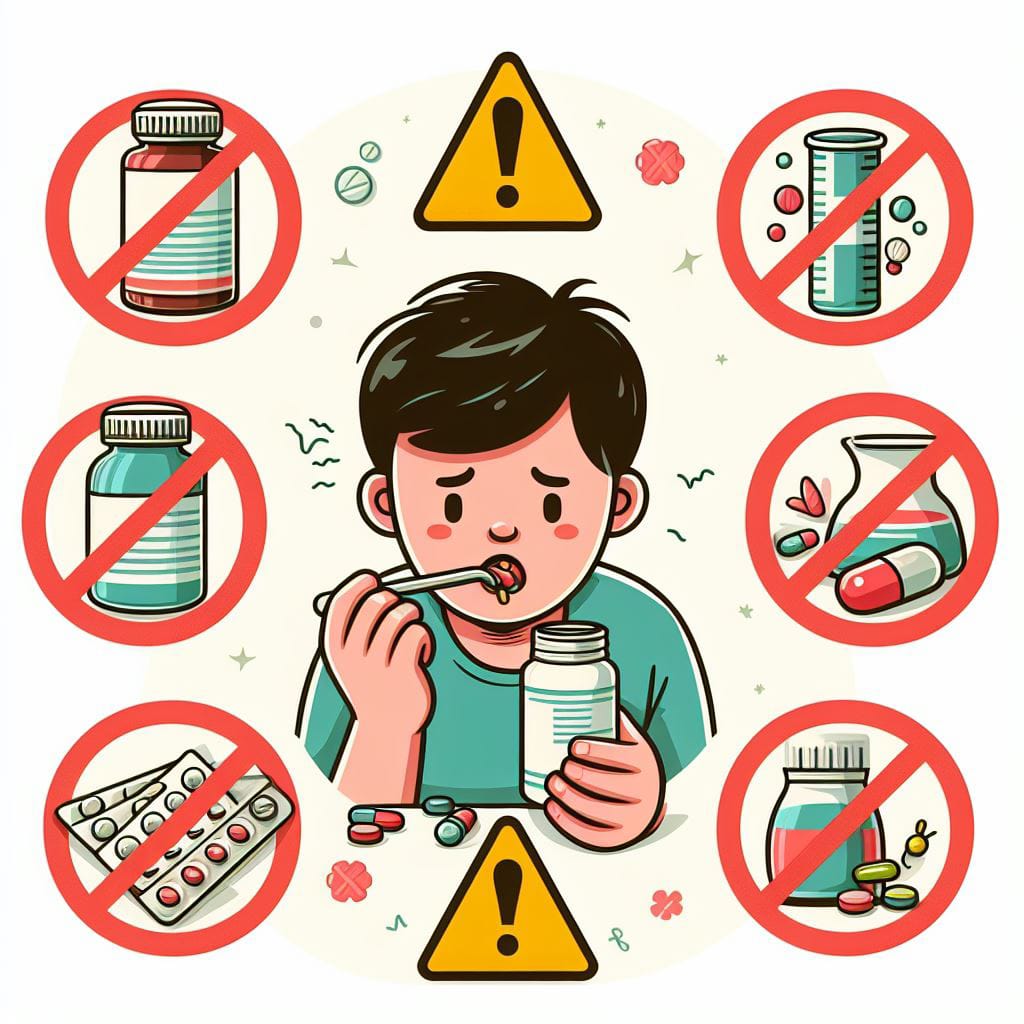The use and misuse of benzodiazepine in primary health care have long been a subject of both necessity and controversy. Benzodiazepines, often referred to as benzos, are a class of psychoactive drugs widely prescribed for their sedative, hypnotic, anxiolytic, anticonvulsant, and muscle relaxant properties.
However, alongside their therapeutic benefits, benzodiazepines also carry significant risks of misuse, dependence, and addiction. While these medications have proven efficacy in managing various medical conditions, their increasing use in primary health care has sparked a necessary debate regarding their potential for misuse and abuse.
The Emergence of Benzodiazepines in Primary Health Care
Initially, benzodiazepines were primarily prescribed by psychiatrists and specialists. However, over time, their use has extended to primary care settings due to their perceived effectiveness and ease of prescription. The most common uses of benzodiazepines are mentioned below.
Benzodiazepines, a class of psychoactive drugs, find diverse applications within the health sector owing to their pharmacological properties. Here are some of the primary uses of benzodiazepines:
1. Anxiety Disorders
Benzodiazepines are widely prescribed for the management of anxiety disorders, including generalized anxiety disorder (GAD), panic disorder, and social anxiety disorder. These medications help alleviate symptoms such as excessive worry, nervousness, and panic attacks by enhancing the effects of gamma-aminobutyric acid (GABA), a neurotransmitter that promotes relaxation and reduces excitability in the brain.
2. Insomnia
Benzodiazepines are often utilized as short-term treatment options for insomnia, particularly in cases where other non-pharmacological interventions have proven ineffective. By inducing sedation and promoting sleep onset, benzodiazepines can help individuals struggling with sleep disturbances achieve restorative sleep.
3. Muscle Spasms and Spasticity
Benzodiazepines demonstrate muscle relaxant properties, making them useful in the management of acute muscle spasms and spasticity associated with conditions such as multiple sclerosis, spinal cord injuries, and cerebral palsy. By acting on the central nervous system, benzodiazepines help reduce muscle tone and alleviate discomfort.
4. Seizure Disorders
Benzodiazepines are employed as adjunctive therapy in the treatment of acute seizures and status epilepticus, a life-threatening condition characterized by prolonged or recurrent seizures. Their ability to enhance GABAergic inhibition in the brain can help terminate seizure activity and prevent further neurological damage.
5. Alcohol Withdrawal
Benzodiazepines play a crucial role in the management of alcohol withdrawal syndrome, a potentially severe condition characterized by symptoms such as tremors, anxiety, agitation, and seizures. By mitigating the hyperexcitability of the central nervous system associated with alcohol withdrawal, benzodiazepines help prevent complications and ensure a safer detoxification process.
6. Sedation and Anesthesia
Benzodiazepines are utilized for preoperative sedation, anxiolysis, and amnesia induction in patients undergoing surgical procedures or diagnostic interventions. Their sedative and anxiolytic effects make them valuable adjuncts to anesthesia, facilitating patient comfort and cooperation during medical procedures.
7. Psychiatric Disorders
Benzodiazepines may be prescribed in conjunction with other medications for the short-term management of certain psychiatric conditions, such as agitation, acute psychosis, and mania. Their calming effects can help alleviate acute symptoms and provide temporary relief while longer-term treatments are initiated.
It’s important to note that while benzodiazepines offer therapeutic benefits in various clinical scenarios, their use should be judiciously monitored due to the risk of tolerance, dependence, and adverse effects, particularly with prolonged or excessive use. Healthcare providers must weigh the potential benefits against the risks when prescribing benzodiazepines and consider alternative treatment options where appropriate to ensure optimal patient care and safety.
What Is The Working Mechanism Of Benzodiazepine?
The working mechanism of benzodiazepines involves their interaction with specific receptors in the brain, ultimately leading to their pharmacological effects. Benzodiazepines primarily act on gamma-aminobutyric acid (GABA) receptors, which are the major inhibitory neurotransmitter receptors in the central nervous system (CNS).
Here’s a breakdown of the working mechanism:
1. Enhancement of GABA Activity
Benzodiazepines bind to a specific site on the GABA-A receptor, which is distinct from the GABA binding site. This binding enhances the binding affinity of GABA to its receptor, resulting in an increased frequency of chloride channel opening. This leads to an influx of chloride ions into the neuron, hyperpolarizing the cell membrane and making it less excitable. Ultimately, this enhances the inhibitory effects of GABA, reducing neuronal excitability and promoting relaxation and sedation.
2. Modulation of Neurotransmission
By enhancing GABAergic inhibition, benzodiazepines modulate the activity of various neurotransmitter systems, including serotonin, dopamine, and norepinephrine. This modulation contributes to the anxiolytic, sedative, and muscle relaxant effects of benzodiazepines.
3. Effects on Different Brain Regions
Benzodiazepines exert their effects on various brain regions, including the limbic system, cortex, and brainstem. These regions are involved in regulating emotions, cognition, and arousal, explaining the broad spectrum of actions observed with benzodiazepine use.
4. Rapid Onset of Action
One of the notable characteristics of benzodiazepines is their rapid onset of action, making them effective for the acute management of anxiety, insomnia, and other conditions. This rapid onset is attributed to their ability to enhance GABAergic neurotransmission quickly upon binding to GABA-A receptors.
5. Dose-Dependent Effects
The effects of benzodiazepines are dose-dependent, with higher doses leading to greater sedation, muscle relaxation, and anxiolysis. However, increasing doses also increases the risk of adverse effects, tolerance, and dependence, underscoring the importance of cautious dosing and monitoring in clinical practice.
Overall, the working mechanism of benzodiazepines revolves around their ability to potentiate GABAergic neurotransmission, resulting in a range of therapeutic effects that are utilized in the management of anxiety, insomnia, seizures, muscle spasms, and other conditions.
Read: Exercise And Immune Function: 8 Ways Exercise Boosts Your Immunity
What Are The Misuses Of Benzodiazepines?

The misuse of benzodiazepines refers to any non-medical use or inappropriate use of these medications, which deviates from their prescribed therapeutic purposes. Benzodiazepine misuse can manifest in various forms, including:
1. Recreational Use: Some individuals misuse benzodiazepines for their euphoric effects or to enhance the effects of other substances, such as alcohol or opioids. Recreational use may involve taking higher doses than prescribed, using benzodiazepines without a prescription, or obtaining them illicitly.
2. Self-Medication: In some cases, individuals may misuse benzodiazepines by self-medicating for symptoms such as anxiety, insomnia, or stress without proper medical supervision. This can lead to inappropriate dosing, reliance on benzodiazepines as a coping mechanism, and masking underlying mental health issues without addressing them effectively.
3. Combination with Other Substances: Benzodiazepines are often misused in combination with other substances, such as alcohol, opioids, or stimulants, to intensify their effects or to counteract the adverse effects of other drugs. This polydrug misuse can increase the risk of overdose, respiratory depression, and other serious health consequences.
4. Tolerance and Dependence: Prolonged or excessive use of benzodiazepines can lead to the development of tolerance, whereby higher doses are needed to achieve the desired effects. Additionally, continued misuse can result in physical and psychological dependence, characterized by withdrawal symptoms upon discontinuation and compulsive drug-seeking behavior.
5. Misuse by Healthcare Professionals: In some cases, healthcare professionals may misuse benzodiazepines by prescribing them inappropriately, overprescribing them, or diverting them for personal use or illicit distribution. This can contribute to patient harm, medication diversion, and breaches of professional ethics.
6. Overdose and Adverse Effects: Misuse of benzodiazepines can increase the risk of overdose, particularly when combined with other central nervous system depressants. Overdose can lead to respiratory depression, coma, and death. Furthermore, long-term benzodiazepine misuse can result in cognitive impairment, memory problems, and diminished overall functioning.
7. Illegal Distribution and Trafficking: Benzodiazepines may be obtained illegally and trafficked for non-medical purposes, contributing to substance abuse issues and criminal activity. Illegal distribution of benzodiazepines circumvents regulatory safeguards and poses significant public health risks.
Addressing benzodiazepine misuse requires a comprehensive approach involving education, prevention, screening, intervention, and treatment strategies. Healthcare providers play a crucial role in identifying misuse, promoting safe prescribing practices, and offering support and resources to individuals struggling with benzodiazepine-related issues.
Additionally, public health initiatives and regulatory measures are essential for mitigating the harms associated with benzodiazepine misuse and promoting responsible medication use.
The Role of Healthcare Providers In Maintaining Use And Misuse Of Benzodiazepine

Healthcare providers play a crucial role in addressing the complex issues surrounding benzodiazepine use in primary care settings.
Screening and Assessment
Routine screening for substance use disorders and comprehensive assessment of patient’s medical history can help identify individuals at risk of benzodiazepine abuse.
Alternative Treatments
Exploring alternative treatments, such as cognitive-behavioral therapy (CBT) and non-benzodiazepine medications, can provide effective alternatives for managing anxiety and insomnia.
Collaborative Care
Collaboration between primary care providers, mental health specialists, and addiction professionals is essential for delivering comprehensive care to individuals struggling with benzodiazepine misuse.
Public Awareness and Education Initiatives
Efforts to raise public awareness and provide education about the risks associated with benzodiazepine use are vital in addressing the issue of misuse and abuse.
Campaigns and Resources
Public health campaigns and educational resources can help disseminate information about the proper use of benzodiazepines and the potential risks of misuse.
Support Groups
Support groups and peer-led initiatives offer valuable resources for individuals struggling with benzodiazepine dependence, providing a supportive environment for recovery.
Regulations and Guidelines
Regulatory measures and clinical guidelines aim to mitigate the risks associated with benzodiazepine prescribing and usage.
Prescription Monitoring Programs
Implementing prescription monitoring programs helps track and prevent the inappropriate use of benzodiazepines, reducing the likelihood of diversion and misuse.
Controlled Substance Laws
Strict enforcement of controlled substance laws helps regulate the prescribing and dispensing of benzodiazepines, minimizing their availability for non-medical purposes.
Read: Is It Safe For Humans To Create New Drugs Through Artificial Intelligence?
Conclusion
The use and abuse of benzodiazepines in primary health care represent a complex issue that requires careful consideration and proactive measures. While these medications offer significant benefits in managing various medical conditions, their potential for misuse and dependence necessitates a multifaceted approach involving healthcare providers, policymakers, and the public to ensure their safe and appropriate use.
